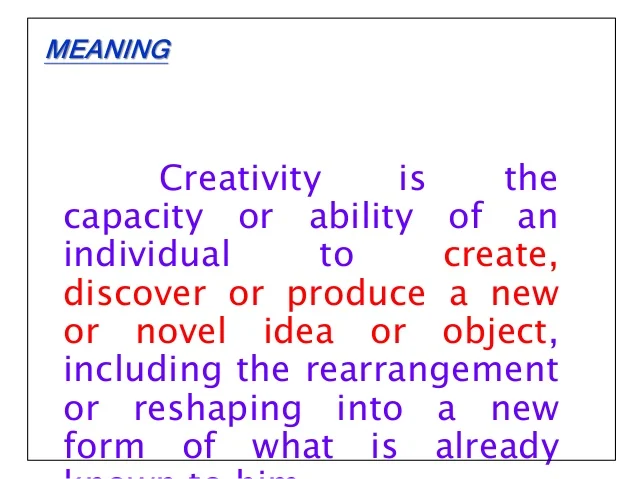The 7-Second Trick For Tapping into Creativity: Discovering the Hidden Wellsprings of Innovation

Coming from Brain to Pen: Tracing the Pathways of Creative Thought
Creativity is a exciting and evasive component of individual knowledge. It makes it possible for us to generate unfamiliar concepts, address sophisticated issues, and reveal ourselves with a variety of kinds of craft. But have you ever before thought about how imaginative thoughts are created in our brains and eventually equated in to written words? In This Is Cool , we are going to delve right into the paths of creative thought, exploring the complex trip coming from mind to pen.

The artistic process starts in the human brain, where various locations operate together to generate brand-new concepts. One crucial player in this procedure is the prefrontal peridium - a location liable for executive functions such as attention, working memory, and decision-making. It participates in a essential task in assisting in divergent thinking, which entails producing a number of answers or ideas.
When encountered with a imaginative duty, such as writing an write-up or making up a item of music, the prefrontal cerebral cortex triggers different nerve organs pathways to promote ingenuity. These paths entail connections between different brain locations like the hippocampus - involved in mind buildup - and the temporal lobe - responsible for language processing.
As notions take design inside our minds, they need to be equated in to positive form. This is where the link between human brain and hand happens into play. The electric motor pallium, located at the rear of the frontal wattle, handle willful movements of our muscles including those required for writing.
When we make a decision to put our imaginative thought and feelings onto paper or key them on a key-board, signals coming from the prefrontal cerebral cortex traveling along neural paths in the direction of the motor cerebral cortex. These indicators at that point promote specific muscle mass in our hands and fingers required for writing or typing.
Remarkably sufficient, researches have revealed that there is actually a sturdy hyperlink between physical action and intellectual procedures like imagination. Engaging in tasks such as doodling or walking may really improve innovative thinking through promoting various locations of the mind.
Once these indicators arrive at their place in the motor peridium, they are completely transformed right into activity. Our hands begin to relocate, and the pen glides around the newspaper or our fingers dance on the keyboard. This is where the theoretical thought and feelings in our thoughts begin to take cement kind.
Having said that, the trip from human brain to marker is not always a smooth one. Innovative blocks and minutes of irritation may impede the flow of tips onto newspaper. This can be connected to different factors such as exterior distractions, self-doubt, or a absence of motivation. Understanding these hurdles and finding methods to conquered them is vital for keeping a productive artistic method.
One successful means to beat artistic blocks is via brainstorming - a technique that encourages free-flowing thought production without judgment. Through permitting tips move without restrictions, we allow ourselves to look into brand new possibilities and damage free of charge from self-imposed limitations.
An additional beneficial tactic is producing a favorable setting for creative thinking. This can involve finding a silent area where you feel relaxed and inspired, surrounding yourself along with stimulating objects or visuals, or even including particular fragrances known to enhance focus and imagination.
In addition, taking advantage of breakdown as an important part of the innovative method can be exceptionally valuable. Many groundbreaking suggestions are born out of countless neglected efforts and models. Through watching breakdowns as opportunities for development instead than problems, we can sustain our willpower and proceed pressing our creative boundaries.
In verdict, mapping the paths of imaginative thought coming from brain to pen discloses a intricate exchange between a variety of locations in our human brains. The prefrontal peridium initiates divergent thinking while the motor pallium equates these ideas right into physical activity by means of action of palms and fingers.
Understanding this detailed adventure may help us support our very own creative thinking through hiring strategies like conceptualizing, generating helpful settings for ideas, and welcoming failure as part of the learning method. So next time you locate yourself looking at a blank web page or having a hard time with your imaginative ventures, always remember that your mind stores immense prospective hanging around to be discharged onto paper.
